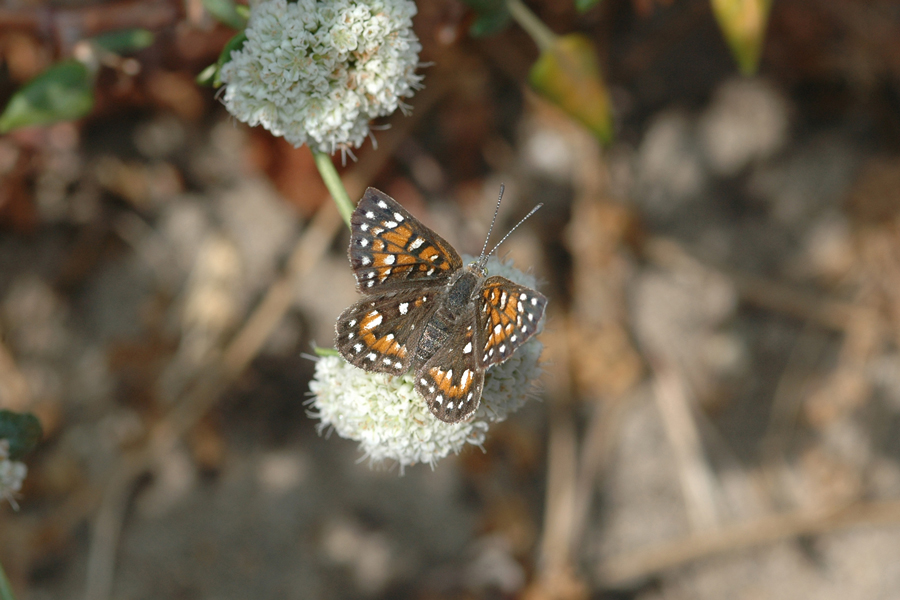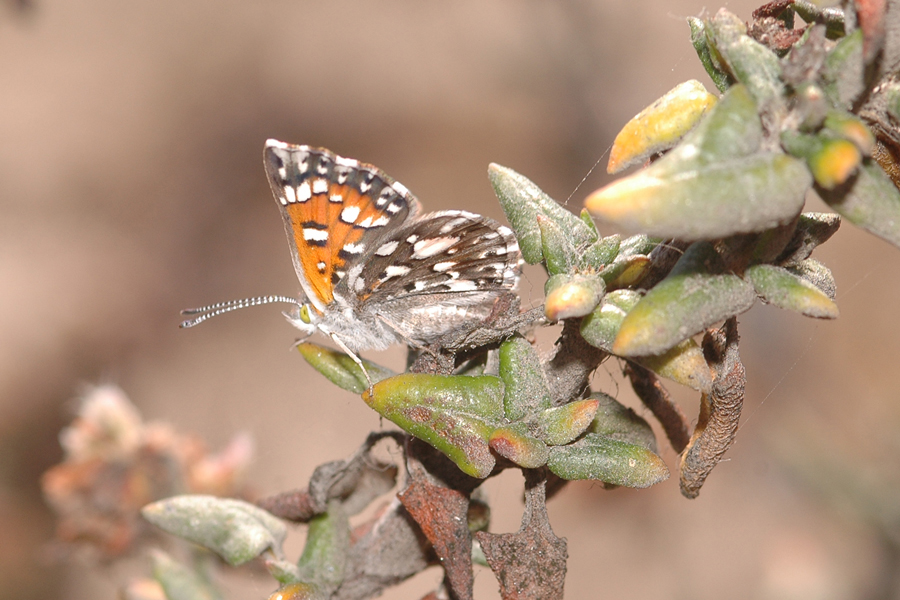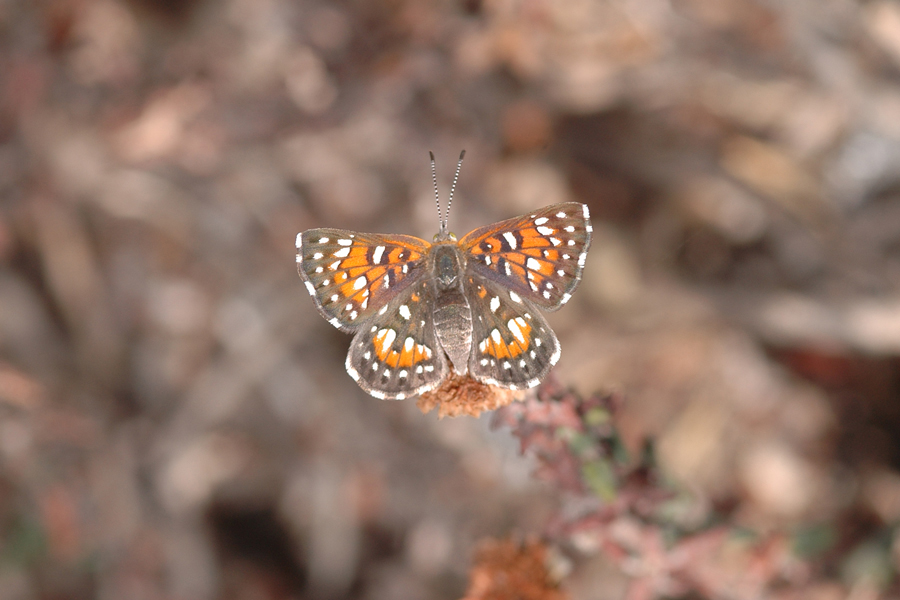Apodemia virgulti arenaria
Sand Dunes Metalmark
Subspecies arenaria is distinguished from nominate virgulti in several ways: the dark areas on the wings are more blackish-gray on both sides, whereas virgulti is more brownish (this was more noticable to the naked eye, and some more than others); the two white spots in the basal area of the dorsal forewing are usually smaller, and the postbasal white spot near the inner margin is usually absent or nearly so as in these photos; on the hind wing, the postmedian white spots are well-developed; and finally, the host is Eriogonum parvifolium while nominate virgulti uses fasciculatum.

This is Apodemia virgulti arenaria, an Eriogonum parvifolium feeder from the sand dunes west of LAX. The same area (and the same plants) hosts the far more famous El Segundo Blue. This butterfly was once considered typical virgulti, but DNA studies have shown that it is (very) different. Don't be surprised if it is eventually given full species status, as it stands apart genetically from all the other members of the mormo-complex. May 21, 2008.
Different individual. It took a long time (over a year and several attempts) to get these photos, since most of the habitat for arenaria is fenced-off.
Ventral view of A. virgulti arenaria. Playa del Rey, August 28, 2009.
A fresh Sand Dunes Metalmark on its host buckwheat. Playa del Rey, August 28, 2009.
©Dennis Walker



